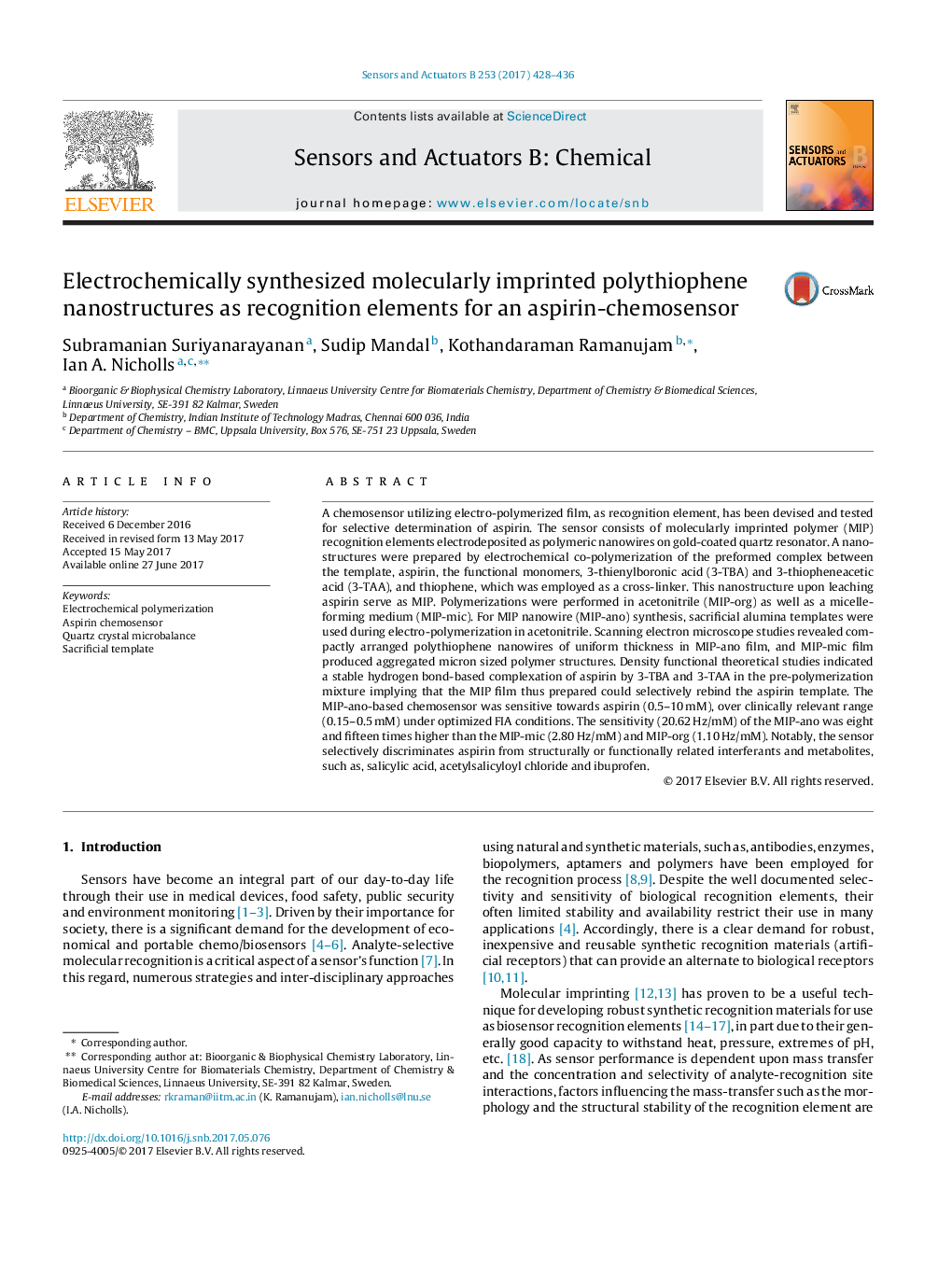| کد مقاله | کد نشریه | سال انتشار | مقاله انگلیسی | نسخه تمام متن |
|---|---|---|---|---|
| 5008989 | 1462038 | 2017 | 9 صفحه PDF | دانلود رایگان |

- Selective determination of aspirin using molecularly imprinted polymer (MIP).
- Electropolymerization of 3-thienylboronic acid, 3-thiopheneacetic acid and thiophene.
- Sacrificial alumina template incorporated MIP enhances density of chemosensing sites.
- MIP works in the clinically relevant range with a sensitivity of 20.62Â Hz/mM.
A chemosensor utilizing electro-polymerized film, as recognition element, has been devised and tested for selective determination of aspirin. The sensor consists of molecularly imprinted polymer (MIP) recognition elements electrodeposited as polymeric nanowires on gold-coated quartz resonator. A nanostructures were prepared by electrochemical co-polymerization of the preformed complex between the template, aspirin, the functional monomers, 3-thienylboronic acid (3-TBA) and 3-thiopheneacetic acid (3-TAA), and thiophene, which was employed as a cross-linker. This nanostructure upon leaching aspirin serve as MIP. Polymerizations were performed in acetonitrile (MIP-org) as well as a micelle-forming medium (MIP-mic). For MIP nanowire (MIP-ano) synthesis, sacrificial alumina templates were used during electro-polymerization in acetonitrile. Scanning electron microscope studies revealed compactly arranged polythiophene nanowires of uniform thickness in MIP-ano film, and MIP-mic film produced aggregated micron sized polymer structures. Density functional theoretical studies indicated a stable hydrogen bond-based complexation of aspirin by 3-TBA and 3-TAA in the pre-polymerization mixture implying that the MIP film thus prepared could selectively rebind the aspirin template. The MIP-ano-based chemosensor was sensitive towards aspirin (0.5-10Â mM), over clinically relevant range (0.15-0.5Â mM) under optimized FIA conditions. The sensitivity (20.62Â Hz/mM) of the MIP-ano was eight and fifteen times higher than the MIP-mic (2.80Â Hz/mM) and MIP-org (1.10Â Hz/mM). Notably, the sensor selectively discriminates aspirin from structurally or functionally related interferants and metabolites, such as, salicylic acid, acetylsalicyloyl chloride and ibuprofen.
Journal: Sensors and Actuators B: Chemical - Volume 253, December 2017, Pages 428-436